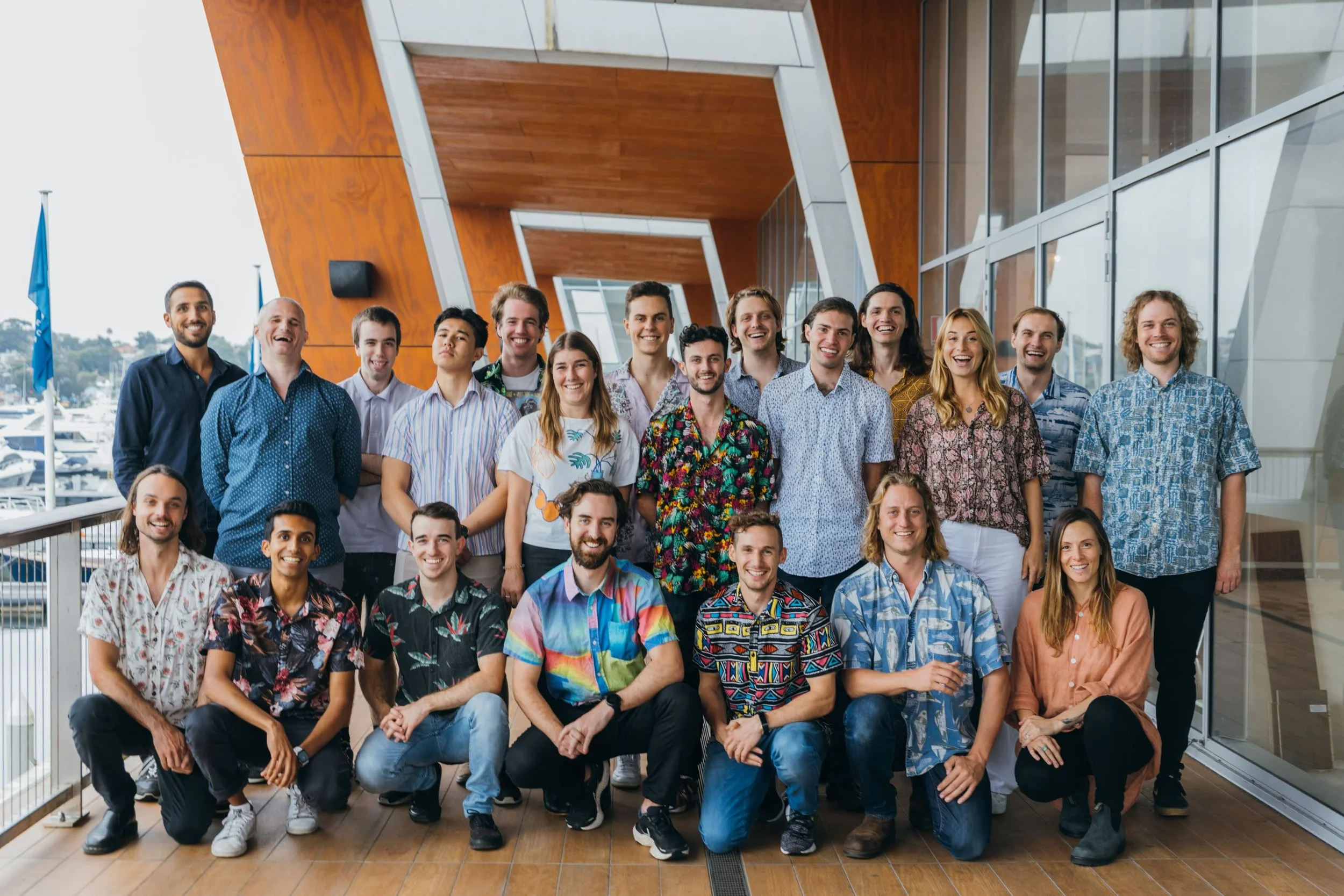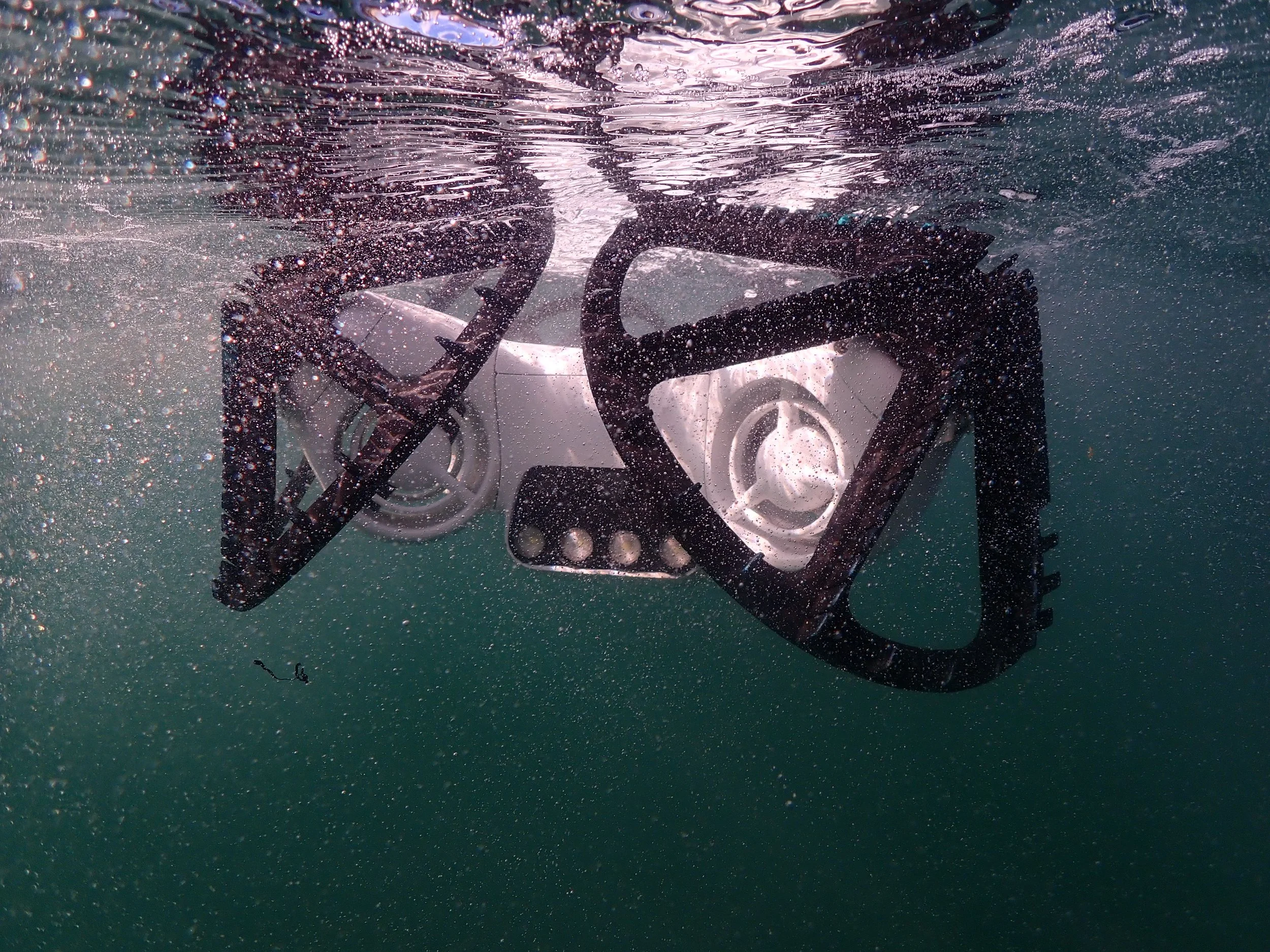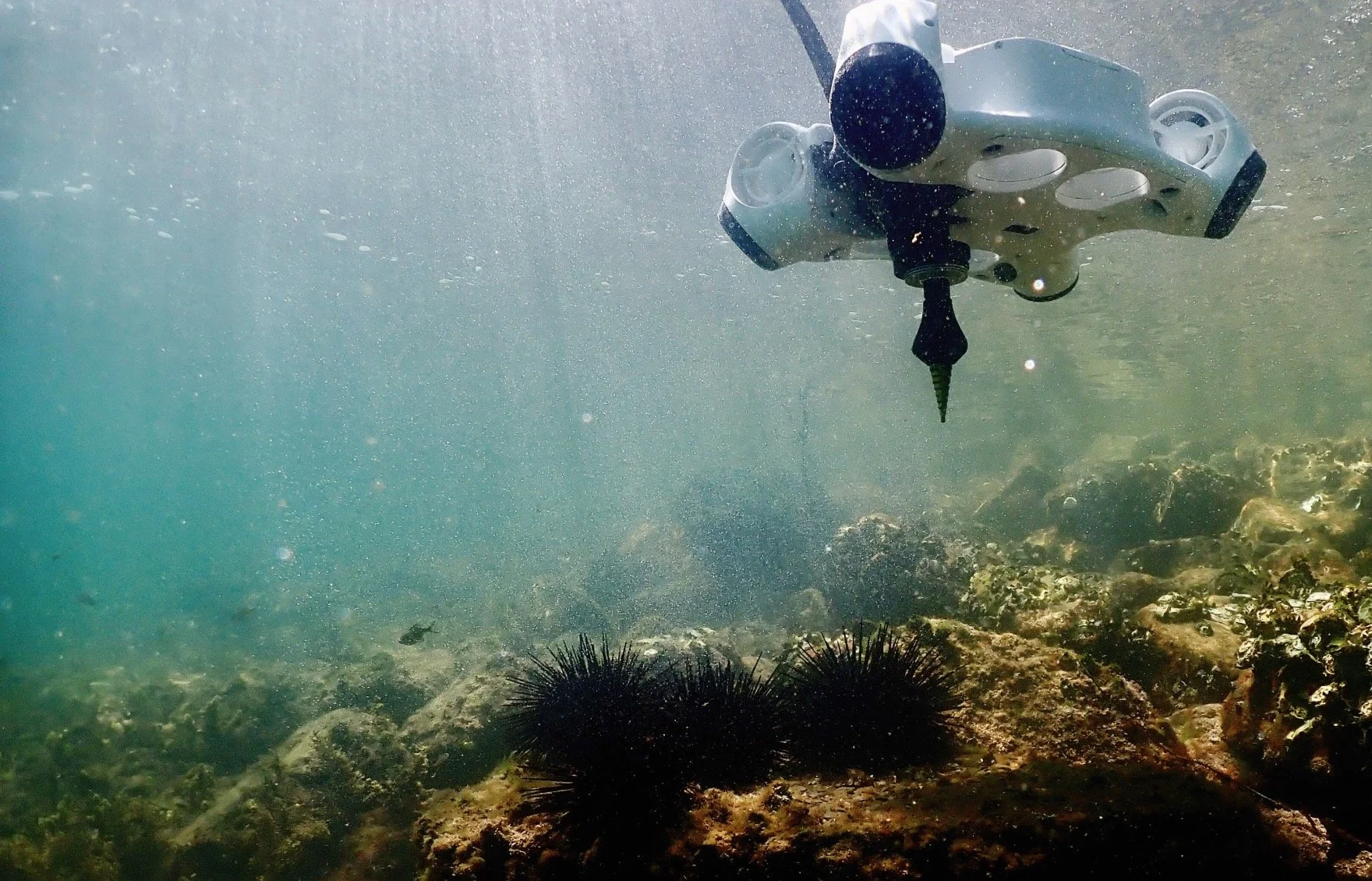The Robotics Startup with an Ocean of Uses: Tom Loefler from Hullbot
Did you know that biofouling - the growth of organisms on on ship and boat hulls - can contribute to a 20-55% increase in global greenhouse gas (GHG) emissions per vessel? And that’s just one of its many consequences. But across Sydney Harbour, an autonomous black-and-white robot is reducing the impact of this mostly hidden problem.
For the first episode of our Pitchfest 2022 Series on the Ocean Impact Podcast, we chatted to Hullbot CEO and Co-founder Tom Loefler about the variety of uses for their robotics and tech.
Hullbot builds robots for healthy oceans, and is currently working on creating “the world’s most sophisticated underwater drone.”
The Syndey-based robotics startup swept our INNOVOCEAN showcase event last year as First Runner Up of The Ocean Impact Pitchfest 2022, Winner of the Climate Spotlight Award, and Winner of the inaugural NSW Ocean Innovation Award presented by NSW Government.
Pictured: Hon. James Griffin MP Minister for Environment and Heritage presenting Tom Loefler with NSW Ocean Innovation award at INNOVOCEAN.
Hullbot is a team of engineers, designers, and ocean enthusiasts who are passionate about underwater tech, driven to create a positive impact, and motivated to preserve the ocean for generations to come. As Tom said - when asked what he and Hullbot Co-founder & CTO Karl Watfern are most proud of - one of their greatest achievements is their team:
”It’s a long journey doing a startup, you want people there that you’re excited to see everyday and that make it a joy to come into work”
But before we jump into how Hullbot is using robotics to help improve ocean health, let’s look at why it’s needed in the first place. And it all comes back to biofouling.
What is biofouling?
Biofouling or ‘biological fouling’ is the unwanted growth of organisms (microorganisms and macro-organisms) on surfaces submerged in natural water, like ship and boat hulls.
It can range from biofilms and bacterial slimes. To large calcareous organisms like barnacles, mollusks, tube worms, zebra mussels, etc. To non-calcareous organisms like seaweed, and algae, etc.
biofouling prevention: Antifouling paint
Traditional (and unsustainable) biofouling prevention methods use antifouling paint. Antifouling paint forms a toxic barrier between the hull and the water in order to prevent biofouling growth. Additionally, many of these coatings are self-eroding by design.
We bet you can already see the issue: toxic paint that’s designed to shed, on vessels in the ocean.
biofouling EFFECTS
Tom discussed the negative effects of biofouling, current solutions, and some of the major problems that Hullbot is addressing:
Biofouling causes increased GHG emissions: A boat with slime on it can have around 20-25% more emissions, while a boat covered in barnacles or tube worms can have up to 55% more emissions. And the shipping industry as a whole contributes to almost 3% of global GHG emissions.
Biofouling significantly increases drag: This decreases speed and causes higher fuel consumption, which has a financial and environmental impact.
Antifouling paint can contribute to microplastic pollution: It’s believed that self-eroding coatings on ships could have a similar microplastic impact on the ocean as tyre wear particles from cars have on land. One study predicts that perhaps 3.7% of the 1.5m tonnes/year of primary ocean microplastics are from ship and yacht coatings.
Antifouling paint can leach toxic chemicals into the ocean: Antifouling paint often contains biocides such as copper, zinc, etc which can leach into the ocean, having negative effects on marine life.
Invasive species transport: Despite antifouling paint being toxic, boats are still covered in organisms. And in Australia, up to 75% of invasive aquatic species are thought to come in as biofouling on hulls. This disrupts native habitats, threatens native species, overwhelms vulnerable ecosystems, and more.
Cleaning boat hulls is expensive and time consuming: You either need to pull the vessel out of the water, or hire expensive divers. Plus, antifouling coatings need to be replaced/reapplied.
Hullbot busy at work on a vessel’s hull
Biofouling prevention: Hullbot
Hullbot puts hull-cleaning on autopilot: autonomously inspecting, mapping, and cleaning the hull of a boat without a human operator present. Their sustainable solution for biofouling prevention is proactive, with the robot providing controlled, gentle cleaning of early stage biofouling on all underwater surfaces of a hull, reducing and even eliminating the need for traditional antifouling paints.
But Hullbot isn’t just a tool for cleaning boat hulls.
An ocean of uses
As Tom mentions in the episode, Hullbot has partnered with research institutes and environmental organisations to use their hardware and technology stack to do even more. From mapping kelp and seagrass habitats, to employing ‘Cullbot’ - a specially kitted-out version of the modular system - for urchin removal to assist kelp restoration.
You can enquire and learn more about these partnerships on their website.
The ‘Cullbot’ in action in an urchin barren, assisting kelp restoration
Advice for emerging innovators
Hullbot Co-founders Karl Watfern and Tom Loefler
When asked if he had any words of wisdom that might help young and emerging innovators, or oceanpreneurial-minded people along their way, Tom had three great pieces of advice:
Hire Great People
“The most important thing is to hire great people that you like working with for team fit, culture, and mission alignment. It’s tempting - when you have limited cash and you’re looking to hire - to look at technical skill or previous experience, or resumes. But it’s a long journey doing a startup.”
stay the course
“Perservence, you’ve just gotta keep going. You’ve got to keep pushing, even when things aren’t working well. You just keep turning up. And maybe that’s the long way, but it’s also the way to do something really, truly innovative with people you really care about.”
Start now
“Just make good sh*t that makes the world better. And hurry up about it.”
…we couldn’t have said it better ourselves Tom!
Listen and Watch
New episodes of the Pitchfest 2022 Series will be releasing each week. Follow the Ocean Impact Podcast wherever you get your podcasts, or subscribe and watch on Youtube.









